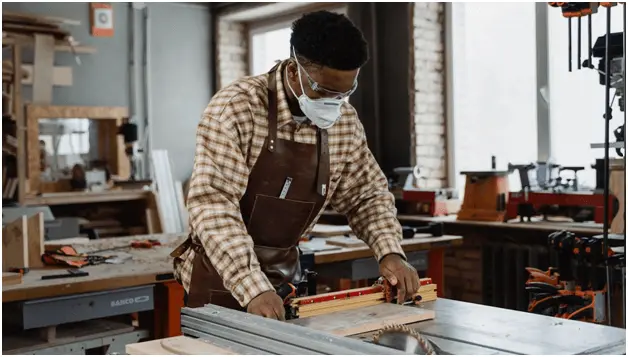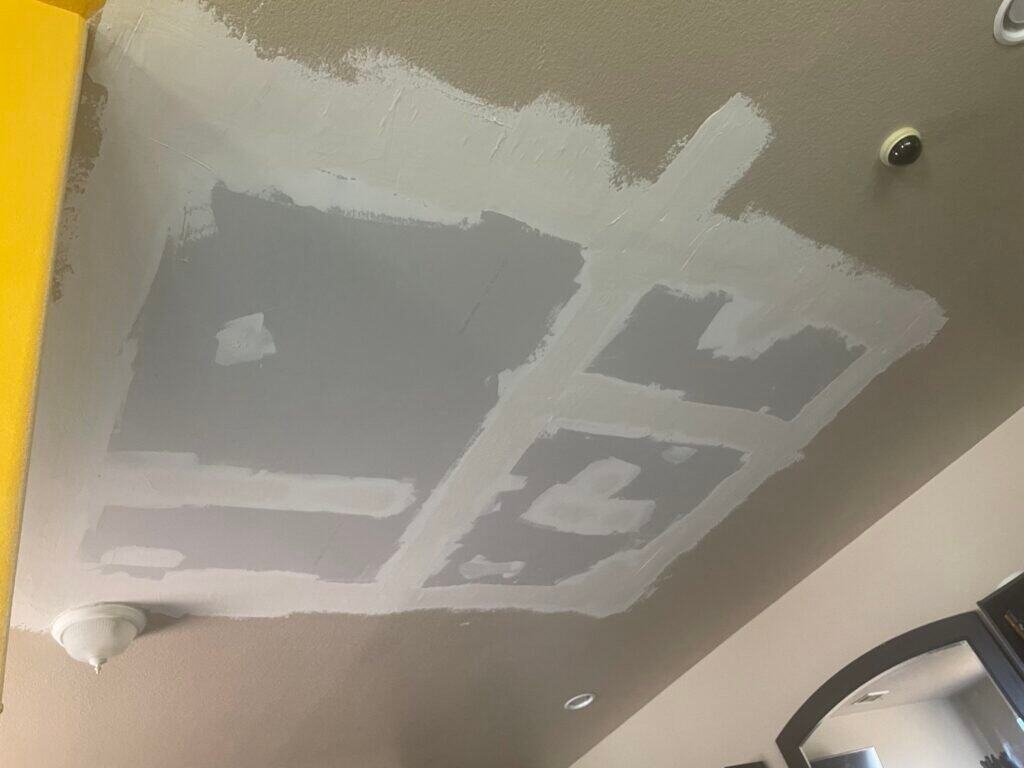Vital Tips for Effective Drywall Repair Work and Installation Techniques
Efficient drywall repair and setup needs a careful approach. Recognizing the kinds of drywall and having the right tools is vital. Exact dimensions and appropriate strategies can greatly affect the result. Several ignore vital steps like taping and sanding, which can make or break the last appearance. As tasks advance, typical difficulties may develop that call for attention. Exploring these suggestions can bring about a much more successful and sleek finish.
Comprehending Different Types of Drywall
Understanding the various types of drywall is important for any kind of successful repair or setup task. Drywall, commonly referred to as plaster board, is available in numerous selections customized for certain applications. Criterion drywall is the most widely used type, ideal for basic indoor wall surfaces and ceilings. Moisture-resistant drywall, usually green in color, is developed for locations susceptible to moisture, such as shower rooms and cooking areas. Fire-resistant drywall, generally tinted pink or purple, is crafted to hold up against greater temperature levels and is frequently used in garages or near heaters. In addition, soundproof drywall helps in reducing sound transmission, making it ideal for multi-family homes or tape-recording studios. Specialty drywall, like cement board, is made use of in damp areas like showers or bathtub borders. Understanding these kinds aids in picking the best material for every project, making sure durability and performance in repairs or brand-new installations.
Necessary Tools for Drywall Fixing and Installment
Having the right tools is necessary for effective drywall repair and installation. A quality energy blade is crucial for cutting drywall sheets exactly. A drywall T-square assists ensure straight sides, while a taping blade is necessary for applying joint substance efficiently over joints. Additionally, a drywall saw enables removing harmed areas or fitting drywall around components.
For hanging drywall, a power drill with drywall screws is vital, as it allows protected and quick setup. A level is also important to confirm that the drywall is straight and appropriately straightened. Once it has dried, a fining sand block or pole sander is important for smoothing out joint substance. A gauging tape is important for exact measurements, stopping waste and guaranteeing a correct fit. Geared up with these tools, people can tackle drywall tasks properly, resulting in professional-looking results.
Step-by-Step Guide to Repairing Holes and Cracks
When addressing holes and splits in drywall, having the right tools and products is vital for a successful repair work. This overview details the essential products and offers a clear, detailed process to effectively restore the surface. Comprehending these aspects will help guarantee a seamless finish and durable results.
Devices and Products Needed
A well-appointed toolkit is essential for effective drywall repair and installation. Key devices consist of an utility blade for cutting drywall, a measuring tape to guarantee exact sizing, and a drywall saw for bigger openings. A putty blade is necessary for using joint substance efficiently, while a sanding block or pole sander helps accomplish a seamless surface. For patching, a roll of fiberglass harmonize tape or paper tape is necessary to strengthen joints. Furthermore, a drill and screws are required for protecting brand-new drywall items. Essential products contain joint substance, guide, and paint to complete the repair service. Having these tools and products handy ensures a smoother, more effective repair service process, yielding professional-looking outcomes.
Fixing Process Steps
Fixing openings and fractures in drywall needs an organized strategy to assure a smooth finish. The location bordering the damages must be cleansed thoroughly to get rid of dirt and particles. Next off, for tiny cracks, a putty knife is used to apply a joint compound evenly over the location. For larger openings, a patch is required; the damaged area is removed, and a brand-new piece of drywall is fitted in location, safeguarded with screws. Once the patch remains in position, joint substance is put on mix the edges. After drying out, sanding the location smooth is necessary. The fixed surface must be topped and painted to match the surrounding wall surface, making certain an unnoticeable repair work.
Techniques for Setting Up Drywall Panels
Installing drywall panels calls for mindful preparation and exact execution to ensure a expert and smooth surface. It is important to determine the wall area accurately and reduce the panels to fit, making certain that they straighten with the studs. Placing the panels horizontally is usually recommended, as this can boost the architectural integrity and decrease the variety of seams.
Making use of drywall screws, installers must safeguard the panels every 16 inches along the studs, ensuring a firm hold. It is essential to stay clear of overdriving the screws, which can harm the paper surface area. For sides and edges, utilizing an energy knife enables for clean cuts and a tight fit.

Finishing Touches: Insulation, Mudding, and Fining sand
When the drywall panels are firmly in click to read area, the next essential step includes the complements of taping, mudding, and sanding. Insulation is essential for creating a smooth change in between panels and concealing joints. A high quality drywall tape, either paper or fiberglass mesh, ought to be used over the seams, guaranteeing it adheres properly to the mud that will certainly be used next.
Mudding, or using joint compound, complies with the taping procedure. This substance fills up voids and smooths out the surface. An initial coat needs to be applied kindly, feathering the sides to mix with the drywall. After the preliminary coat dries, subsequent layers might be needed for a flawless coating.
Sanding is required to achieve a smooth surface. A fine-grit sandpaper needs to be made use of to gently ravel any blemishes. Treatment ought to be taken to stay clear of over-sanding, which can damage the drywall - Drywall Installation Ogden Utah. Properly performed, these ending up touches create a specialist look ready for paint
Tips for Keeping Your Drywall After Setup
Keeping drywall after installation is vital to preserving its appearance and architectural integrity. Routine cleaning is essential; dirt and dust can gather, so mild cleaning with a wet fabric is suggested. Property owners should also examine for any type of indications of wetness or mold and mildew, specifically in high-humidity areas like bathrooms and kitchens. If any type of damage takes place, it is necessary to resolve it immediately to avoid more issues.
Using furnishings pads can help prevent scrapes or dents from heavy things. In addition, repainting the drywall with a top notch, washable paint gives an extra layer of defense and makes future cleaning simpler. Prevent making use of abrasive cleansers or devices, as these can damage the surface area. Preserving a stable indoor climate with proper humidity degrees will certainly assist prevent buckling or fracturing over time. By complying with these tips, one can guarantee that drywall remains in superb problem for years look at this now to come.
Regularly Asked Inquiries
How Long Does Drywall Take to Totally Dry After Installment?

Can I Set Up Drywall Over Existing Drywall?
Yes, drywall can be mounted over existing drywall, but it is vital to ensure the underlying surface area is safe and adequately prepared. This technique can enhance insulation and lower installation time, though it may add weight.
What Is the most effective Way to Soundproof Drywall?
The ideal means to soundproof drywall involves using specialized soundproofing products, such as resistant networks, acoustic caulk, and sound-dampening drywall. These techniques properly minimize sound transmission in between spaces, improving total acoustic performance in living spaces.
Just how Do I Pick the Right Drywall Density?
To select the best drywall thickness, consider the application and location. Standard residential wall surfaces normally utilize 1/2 inch, while ceilings or specialized areas might call for 5/8 inch for additional strength and soundproofing abilities.
Are There Eco-Friendly Drywall Options Available?
Yes, eco-friendly drywall choices are offered. These consist of products made from recycled materials, gypsum boards with low volatile organic substances (VOCs), and those using lasting manufacturing procedures, supplying environmentally-conscious options for building and improvement tasks.
Having the right devices is vital for efficient drywall fixing content and setup. For hanging drywall, a power drill with drywall screws is indispensable, as it enables fast and secure installation. Trick tools include an utility blade for cutting drywall, a tape step to assure exact sizing, and a drywall saw for bigger holes. Yes, drywall can be installed over existing drywall, yet it is vital to guarantee the underlying surface is secure and adequately prepared. The best way to soundproof drywall entails making use of specialized soundproofing products, such as durable channels, acoustic caulk, and sound-dampening drywall.